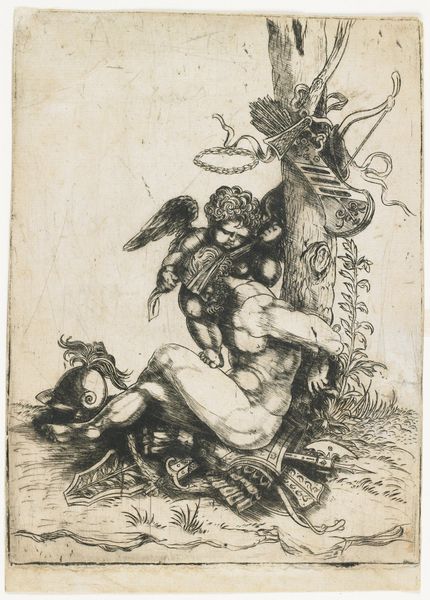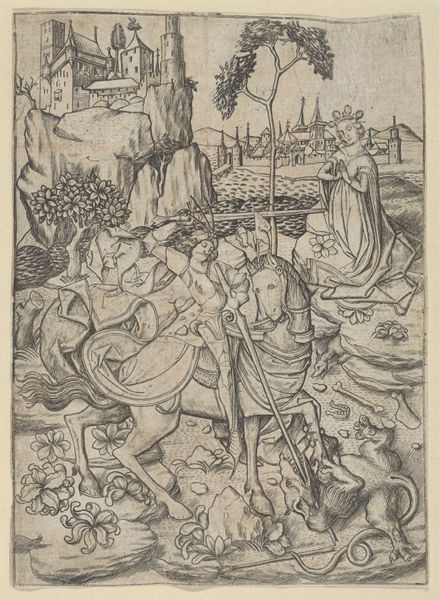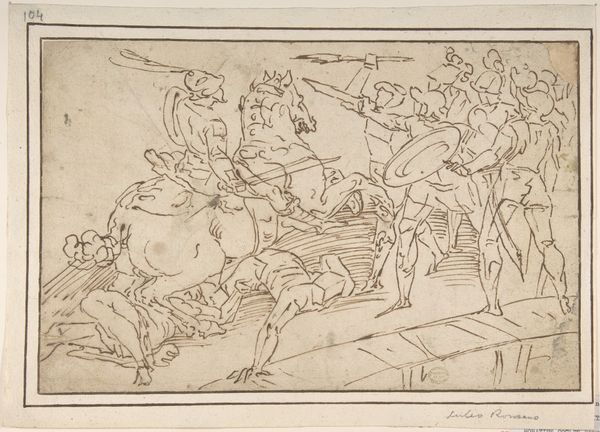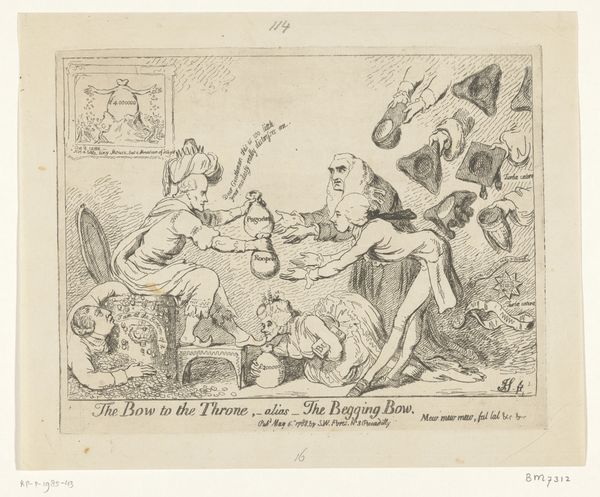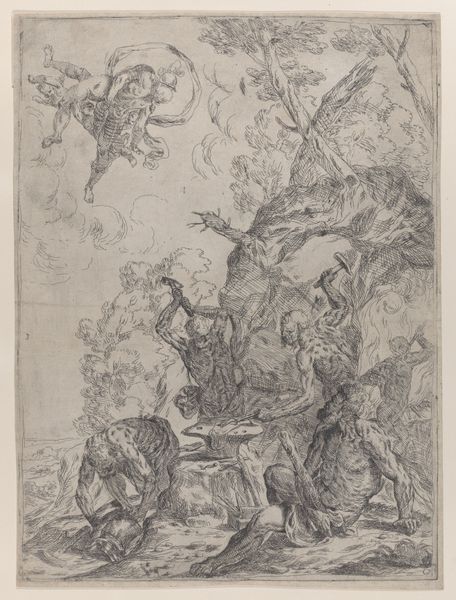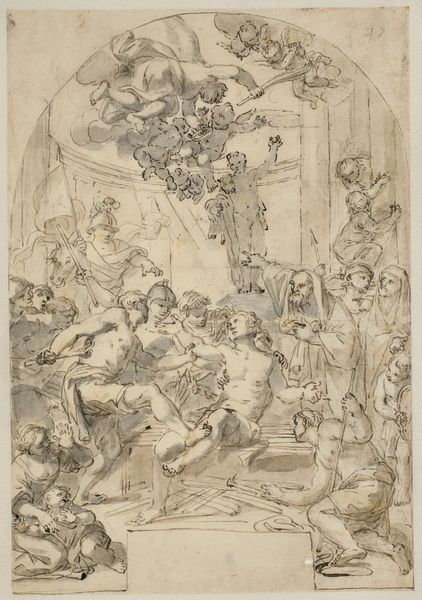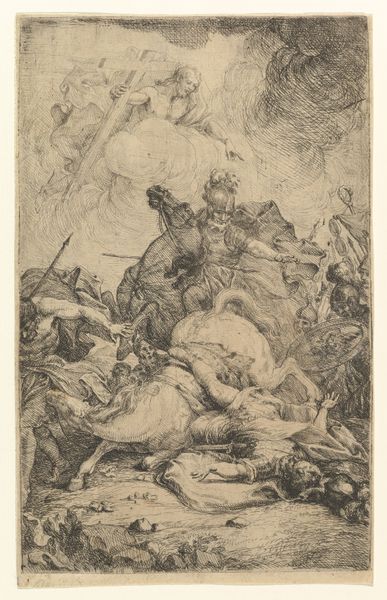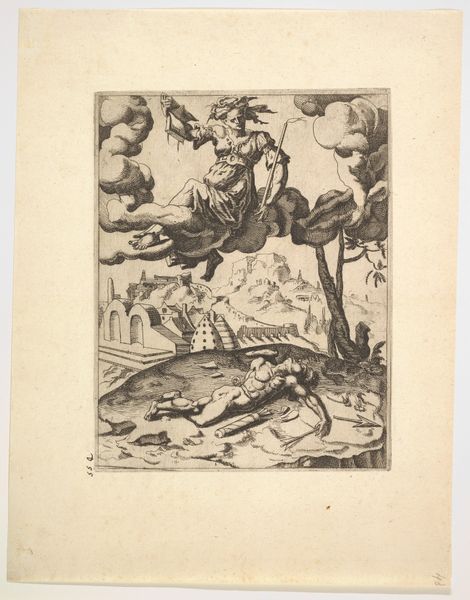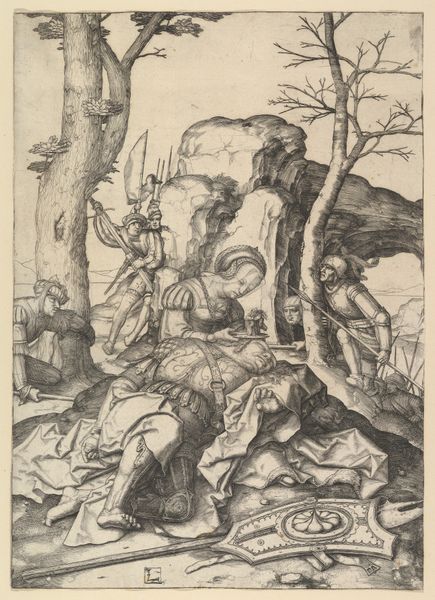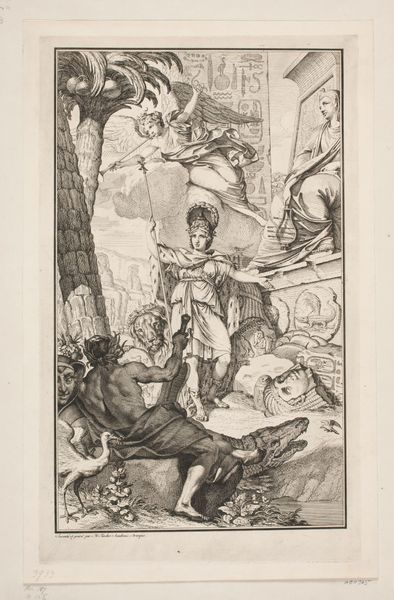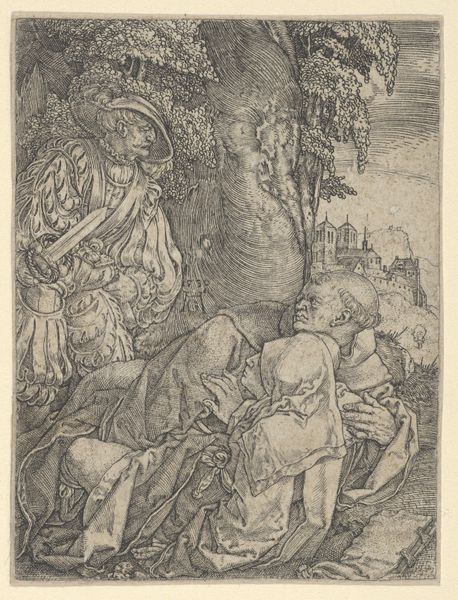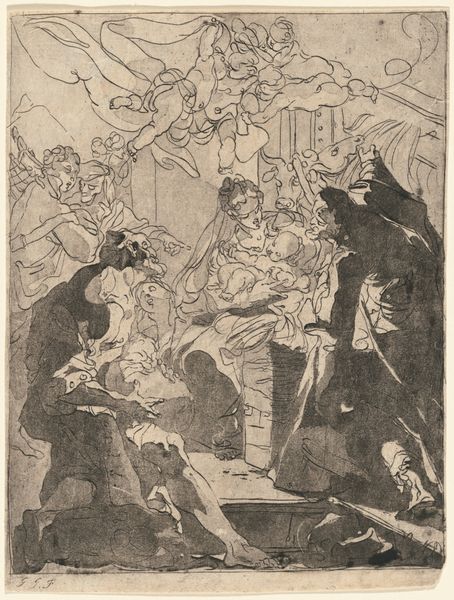
print, engraving
#
narrative-art
# print
#
figuration
#
line
#
history-painting
#
italian-renaissance
#
engraving
Dimensions: sheet: 11.8 x 11.1 cm (4 5/8 x 4 3/8 in.)
Copyright: National Gallery of Art: CC0 1.0
Giovanni Battista Palumba created 'Saint George and the Dragon' around 1500 using the technique of engraving. This printmaking process involves incising lines into a metal plate, inking the surface, and then wiping it clean, leaving ink only in the engraved lines. The plate is then pressed onto paper, transferring the image. The distinct quality of engraving lies in the precision of the lines, which define form, texture, and light with remarkable detail. Notice how Palumba uses hatching, closely spaced parallel lines, to create shadows and volume. The density and direction of these lines give a tangible sense of depth to the figures of Saint George, his horse, and the dragon, making them almost sculptural. Engraving in the 16th century was a highly skilled craft, demanding years of training. The process allowed for the relatively inexpensive reproduction of images, making art and information accessible to a wider audience. Appreciating the labor and technical skill involved in creating this print invites us to consider the social context of art production in the Renaissance.
Comments
No comments
Be the first to comment and join the conversation on the ultimate creative platform.
